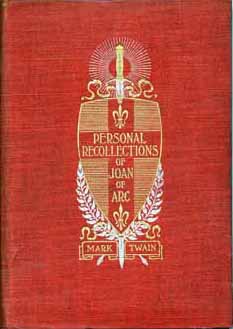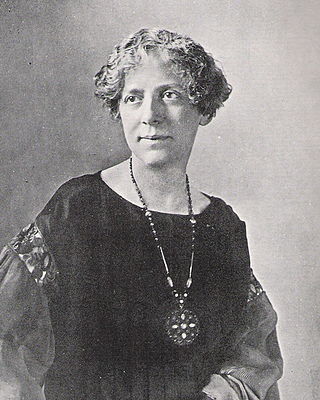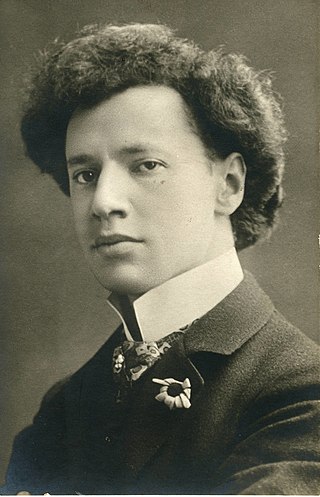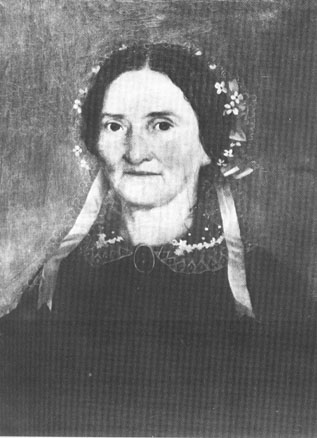
Adventures of Huckleberry Finn is a novel by American author Mark Twain, which was first published in the United Kingdom in December 1884 and in the United States in February 1885.

Florida is a village in Monroe County, Missouri, United States. It is located at the intersection of Missouri Route 107 and State Route U on the shores of Mark Twain Lake. In 1910 the population was 200, per the census data in the 1911 Cram's World Atlas. As of the 2020 census, however, the reported population was five. The Mark Twain Birthplace State Historic Site is located in Florida, with Mark Twain State Park nearby.

Samuel Langhorne Clemens, known by the pen name Mark Twain, was an American writer, humorist, and essayist. He was praised as the "greatest humorist the United States has produced," with William Faulkner calling him "the father of American literature." Twain's novels include The Adventures of Tom Sawyer (1876) and its sequel, Adventures of Huckleberry Finn (1884), with the latter often called the "Great American Novel." He also wrote A Connecticut Yankee in King Arthur's Court (1889) and Pudd'nhead Wilson (1894), and co-wrote The Gilded Age: A Tale of Today (1873) with Charles Dudley Warner.

The Ouija, also known as a Oujia board, spirit board, talking board, or witch board, is a flat board marked with the letters of the Latin alphabet, the numbers 0–9, the words "yes", "no", and occasionally "hello" and "goodbye", along with various symbols and graphics. It uses a planchette as a movable indicator to spell out messages during a séance. Participants place their fingers on the planchette, and it is moved about the board to spell out words. The name "Ouija" is a trademark of Hasbro, but is often used generically to refer to any talking board.

Roughing It is a book of semi-autobiographical travel literature by Mark Twain. It was written in 1870–71 and published in 1872, following his first travel book The Innocents Abroad (1869). Roughing It is dedicated to Twain's mining companion Calvin H. Higbie, later a civil engineer who died in 1914.
Jap is an English slur abbreviation of the word "Japanese".

Personal Recollections of Joan of Arc, by the Sieur Louis de Conte is an 1896 novel by Mark Twain which recounts the life of Joan of Arc.

Patience Worth was allegedly a spirit contacted by Pearl Lenore Curran. This symbiotic relationship produced several novels, poetry and prose which Pearl Curran claimed were delivered to her through channelling the spirit of Patience Worth.

Ossip Salomonovich Gabrilowitsch was a Russian-born American pianist, conductor and composer.

Mark Twain's legacy includes awards, events, a variety of memorials and namesakes, and numerous works of art, entertainment, and media.

Olivia Susan Clemens was the second child and eldest daughter of Samuel Clemens, who wrote under the pen name Mark Twain, and his wife Olivia Langdon Clemens. She inspired some of her father's works, at 13 wrote her own biography of him, which he later published in his autobiography, and acted as a literary critic. Her father was heartbroken when she died of spinal meningitis at age 24.

Clara Langhorne Clemens Samossoud, was an American concert singer, and the daughter of Samuel Clemens, who wrote as Mark Twain. She managed his estate and guarded his legacy after his death as his only surviving child. She was married first to Ossip Gabrilowitsch, then to Jacques Samossoud after Gabrilowitsch's death. She wrote biographies of Gabrilowitsch and of her father. In her later life, she became a Christian Scientist.
William Street Hutchings, also known as Professor Hutchings and the Lightning Calculator, was a 19th-century math prodigy and mental calculator who P. T. Barnum first billed as the "Boy Lightning Calculator". He later worked as a sideshow barker and wrote a book called The Lightning Calculator.

Martha Rofheart was an American writer of historical novels, an actress and early in her career, a model.
Twain and Shaw Do Lunch, formerly known as Shaw and Twain Do Lunch, was written by Chambers Stevens and made its world premiere at Miami's New Theatre in December 2011. It is based on a real meeting between Mark Twain and George Bernard Shaw. The full-length comedic play has won the Fourteenth Annual Long Beach Playhouse New Works Festival in Long Beach, CA, the 2005 Palm Springs International Playwriting Festival for Best Comedy, and has also appeared in the Futurefest at the Dayton Playhouse.
The Californian was a San Francisco literary newspaper published weekly from May 28, 1864 until February 1, 1868.

Mark Twain Cave — originally McDowell's Cave — is a show cave located near Hannibal, Missouri. It was named for author Mark Twain whose real name was Samuel Langhorne Clemens. Clemens lived in Hannibal from 1839 to 1853, age 4 to 17. It is the oldest operating show cave in the state, giving tours continuously since 1886. Along with nearby Cameron Cave, it became a registered National Natural Landmark in 1972, with a citation reading "Exceptionally good examples of the maze type of cavern development." The cave — as "McDougal's Cave" — plays an important role in the novel The Adventures of Tom Sawyer (1876) by Mark Twain and was renamed in honor of the author in 1880.

Charles L. Webster and Company was an American subscription publishing firm founded in New York in 1884 by author and journalist Samuel Clemens, popularly known as Mark Twain. The firm was closed after declaring bankruptcy in 1894.

Truman W. "True" Williams was an American artist known as the most prolific illustrator to Mark Twain's books and novels. He illustrated the first edition of The Adventures of Tom Sawyer (1876) and was thus the first to visually portray such characters as Tom Sawyer and Huckleberry Finn. He was also sole illustrator of Twain's Sketches, New and Old and primary illustrator of Roughing It and The Innocents Abroad. Working with a number of publishers he also illustrated works by writers Bill Nye, George W. Peck, Joaquin Miller, and others. He was also a notorious drunk, which slowed his work and made him unreliable.

Jane Lampton Clemens was the mother of author Mark Twain. She was the inspiration of the character "Aunt Polly" in Twain's 1876 novel The Adventures of Tom Sawyer. She was regarded as a "cheerful, affectionate, and strong woman" with a "gift for storytelling" and as the person from whom Mark Twain inherited his sense of humor.
















